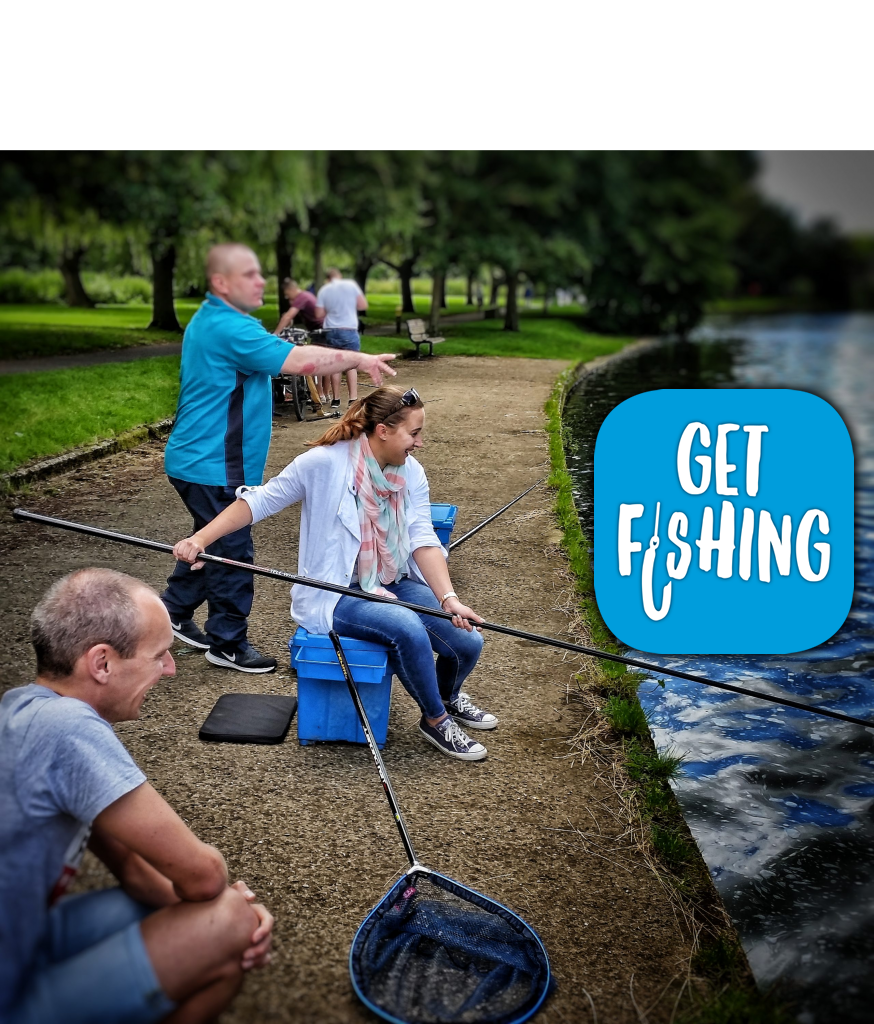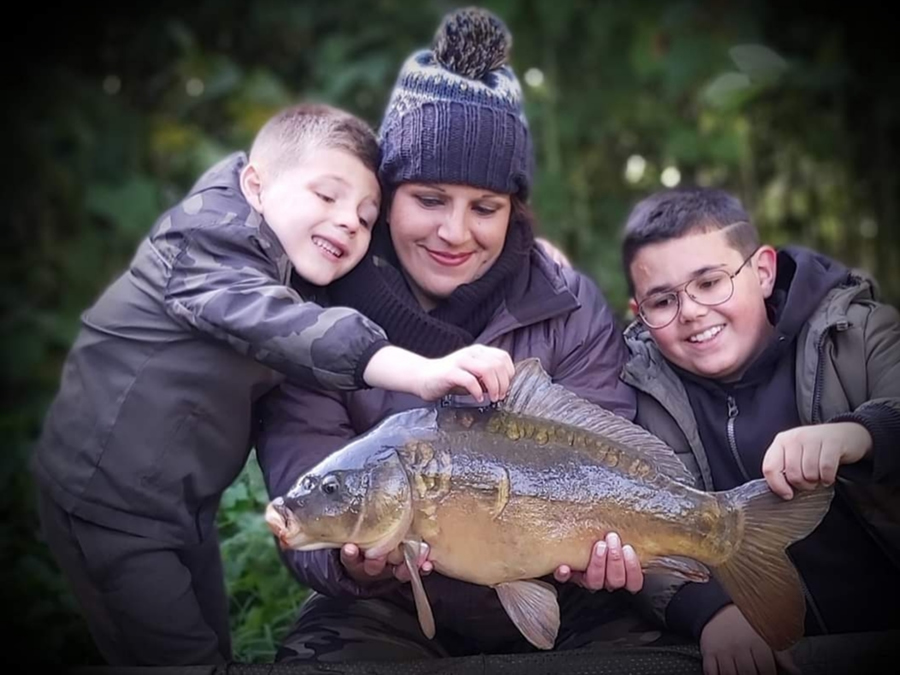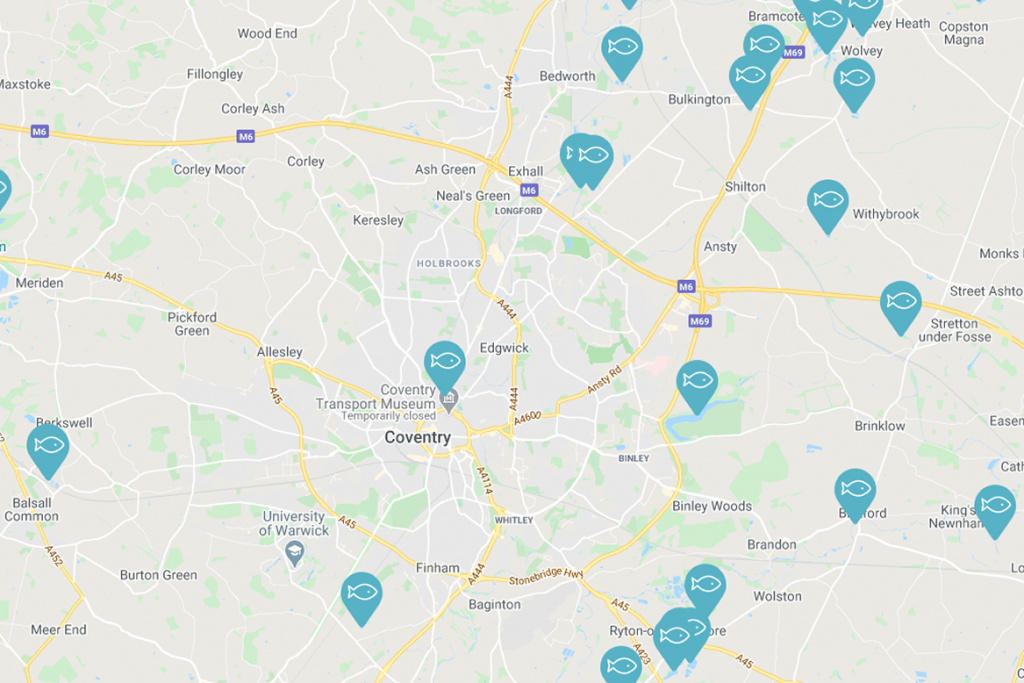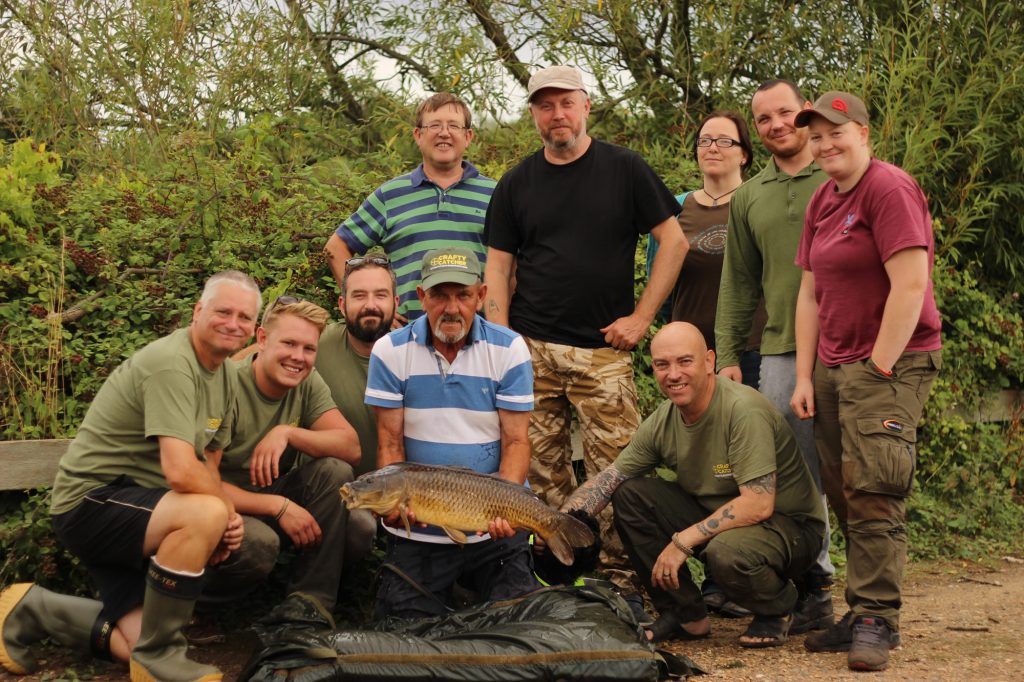
Lines On The Water
Helping clubs and fisheries tackle invasive non-native species
The Angling Improvement Fund for bio-security projects and the safe removal of invasive non-native species is open to applications from clubs and fisheries until 26th May, 2023.
This fund, which is financed by Fishing Licence income, covers elements such as equipment purchase and training courses which will help to control established invasive species and stop its spread onto other waters.
But what can applicants expect from the process? We spoke to one club that’s made clear progress since their successful application.
“We’re hoping to get a 95% reduction in the Japanese Knotweed we treated last year and we now have the equipment and the training to continue our work in the future.”
That’s the positive overview from within the Bolton-based Bradshaw Brook Fly Fishing Club which gained an Angling Improvement Fund (AIF) grant to support the control of an extensive Japanese Knotweed infestation on their waters.
The man who suggested his club should make an application to the fund is John Frazer, who has been the driving force from the outset. John already had experience in helping remove Himalayan Balsam from the Derbyshire Wye’s catchment area . His suggestion to his club’s committee that the AIF might help their own cause was the starting point for a process that highlights the fund’s overall potential when allied to genuine local determination.
“The help we’ve received before, during and after the funding process is at the top-end of what we expected,”: said John. There was always a question about how many volunteers we might get to help and how committed they would be, but it turned out we had sufficient numbers and they were totally committed to the task. Once the project got going and people could see the benefits, they were even more willing to get involved. Bradshaw Brook had 50% Japanese Knotweed so it was very clear to everybody what the benefits would be if we could eradicate it.”
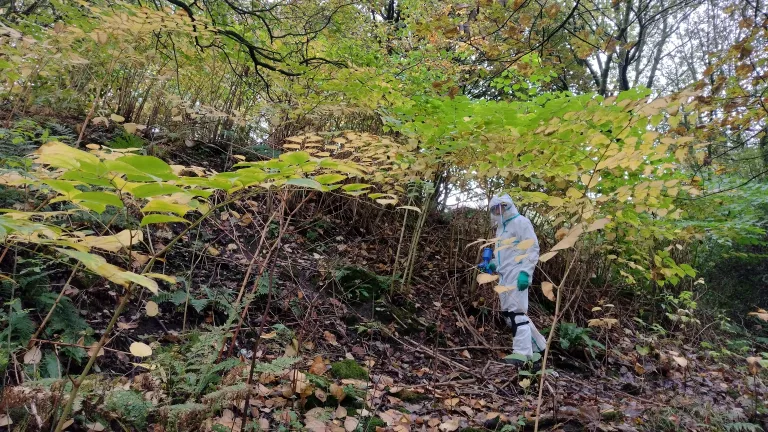
As you’d expect from any grant process, applicants can expect a rigorous exploration of the project before any monies are awarded. For example, all applicants must have consulted with one of the Angling Trust’s Environment Officers before submitting an application.
“I didn’t expect the process to be easy!” Said John. “In truth it was time consuming but we knew we had a strong case. We had input from north region Environment Officer Ian Doyle and Fund Manager Andy Petch and while our case was very strong anyway, their input certainly helped us to shape our application. It actually turned out we had more problems with Knotweed than we thought because it was also on one of the feeder streams. A riverbank is the perfect environment for it because it spreads by washing itself downstream.”
As with all applications, the BBFFC had to illustrate how funding would be used if the application was successful and from Andy Petch’s perspective, the clarity of their application, when allied to the strength of their case, was pivotal in its success.
“When Ian and I visited the river, it was clear they had a problem which needed to be addressed, not only for the stretches under club management but for areas further downstream too.” Said Andy. “John and his colleagues had done a great deal of work surveying the area and it was clear this was a project that would benefit the wider community as opposed to just an angling club.”

It should go without saying that good biosecurity practice is a discipline not just reserved for angling clubs and while it’s specifically the angling community that directly benefits from the AIF when funding is awarded, nature’s general welfare is also a beneficiary. Ian Doyle is clear on his overall role when visiting a potential AIF applicant.
“When I visit a site, I’m looking for the impact of an invasive species on the local ecology, Said Ian. “There are issues such as erosion and the choking of gravel beds which house invertebrates and provide food for fish and birds. My assessment will always go beyond the singular impact of invasive non-native species on angling but in essence, a healthy general environment equals healthy fish.”
At Bradshaw Brook, John Frazer and his colleagues focused largely on a prescribed method of controlling Japanese Knotweed which couldn’t be more direct in its application.
“We always thought stem injection was the way to go because there’s no collateral damage and it’s a lot easier for volunteers to use because the equipment is quite lightweight. Overall, we effectively treated an area the size of a football pitch last year and we hope to do the equivalent of two football fields this year.
“When Ian and Andy came to see us, they said we needed to do something about the Himalayan Balsam too. And now, with 95% eradication of the Knotweed, if we don’t do something about the Balsam, it’ll just populate the areas where the Knotweed used to be.”
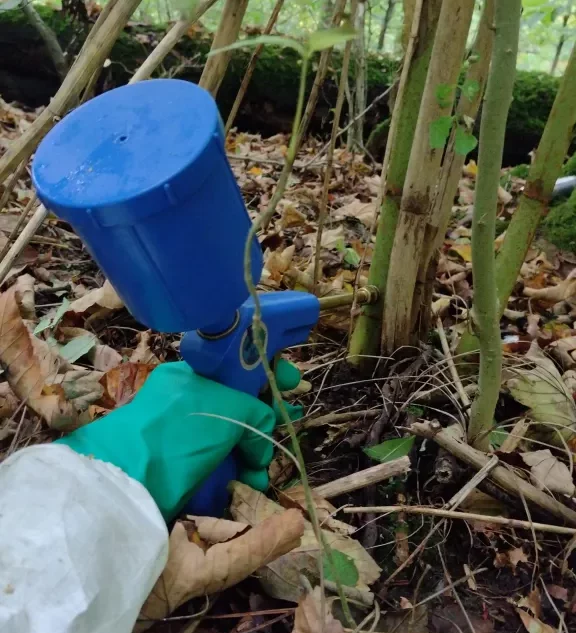
The safe removal of invasive non-native species is one thing, but there’s an additional – and equally important – consideration when it comes to onward management of spread. Eradication from a site is one thing but implementing an efficient bio-security programme as part of the overall management plan is important too. Reflecting this in an application could be make a huge difference to how your plan is received but what, exactly IS bio-security when it comes to INNS management?
“Bio-security in its simplest sense is a set of measures that are put in place to minimise the risk of invasive species being spread from one site to another,” said Dr. Emily Smith, who is the Angling Trust’s Environment Manager.
“What that means is that at the end of a session of control, people will clean their boots, clothing and equipment to make sure no seeds or fragments are taken elsewhere. There is research out there that shows that by following the process ‘Check, Clean, Dry’ 99% of invasive species retained on equipment would be killed.
“Some of the sites where management takes place can obviously be in the middle of nowhere so it’s not a case of expecting clubs and fisheries to have ‘facilities’ as such. But when the local Environment Officer visits, it’s one of the things they can advise on while taking into account local services such as water and electricity or perhaps the lack of them. Their guidance on bio-security will be to suit the fishery rather than impose impossible methodology.”
In Bolton, the BBFFC project remains firmly a work in progress but has undoubtedly been accelerated towards success by AIF funding. John is proud of what he and his colleagues have already achieved and will continue to work to achieve in the future.
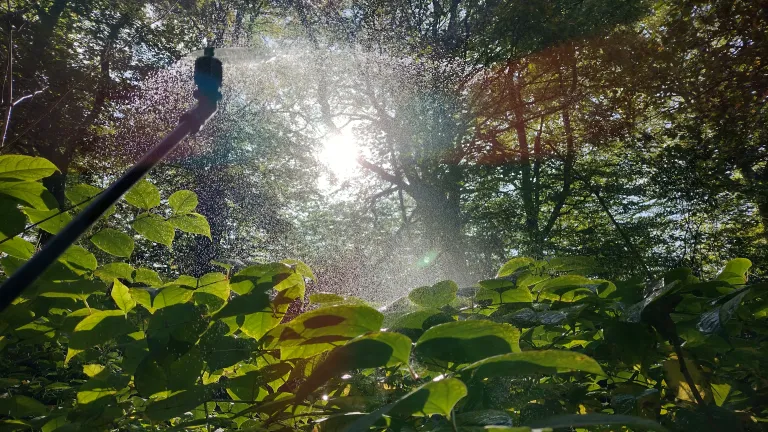
Equipment provided by the AIF can be used by neighbouring clubs and fisheries.
“We stated in our application that any other club who wanted to use the equipment and expertise would have access to it, so in terms of what we’ve been able to do, we’re hoping that Bradshaw Brook can be like a beacon in encouraging others to take it on. If you know you’ve got a problem you need to make sure you have committed volunteers but if you have, I’d say go for it.“
Any club or fishery that wishes to apply for support from the AIF should reading the funding information pages on the Angling Trust website.
General information on Invasive, Non-Native Species and contact details for your local Environment Officers can be found here.
*Pictures Courtesy of John Frazer
You might also like
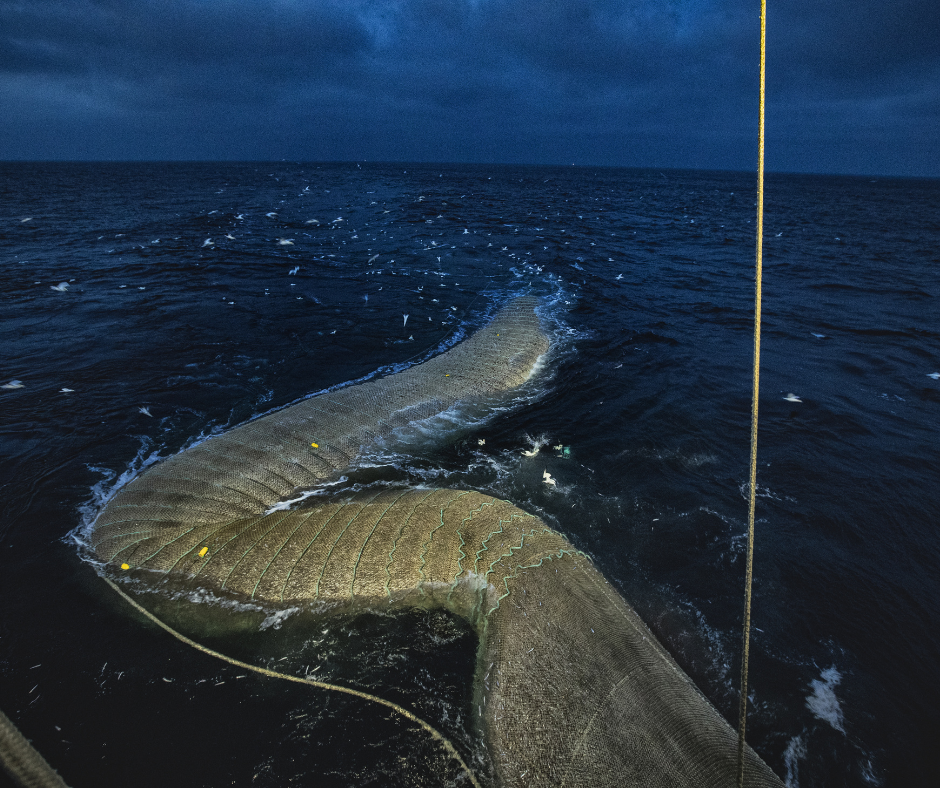
Government Announces Ban on Bottom Trawling in 41 Marine…

Angling Trust Presses Water Commission to Go Faster and…

VIDEO: Alice and her 3 boys have a day…

Recovery Rods help boost mental health and wellbeing by…

Teddy is hooked! – back for more fishing and…

Thank you to all our volunteers – you do…

Get Fishing Fund – Funded Project: HACRO were visited…
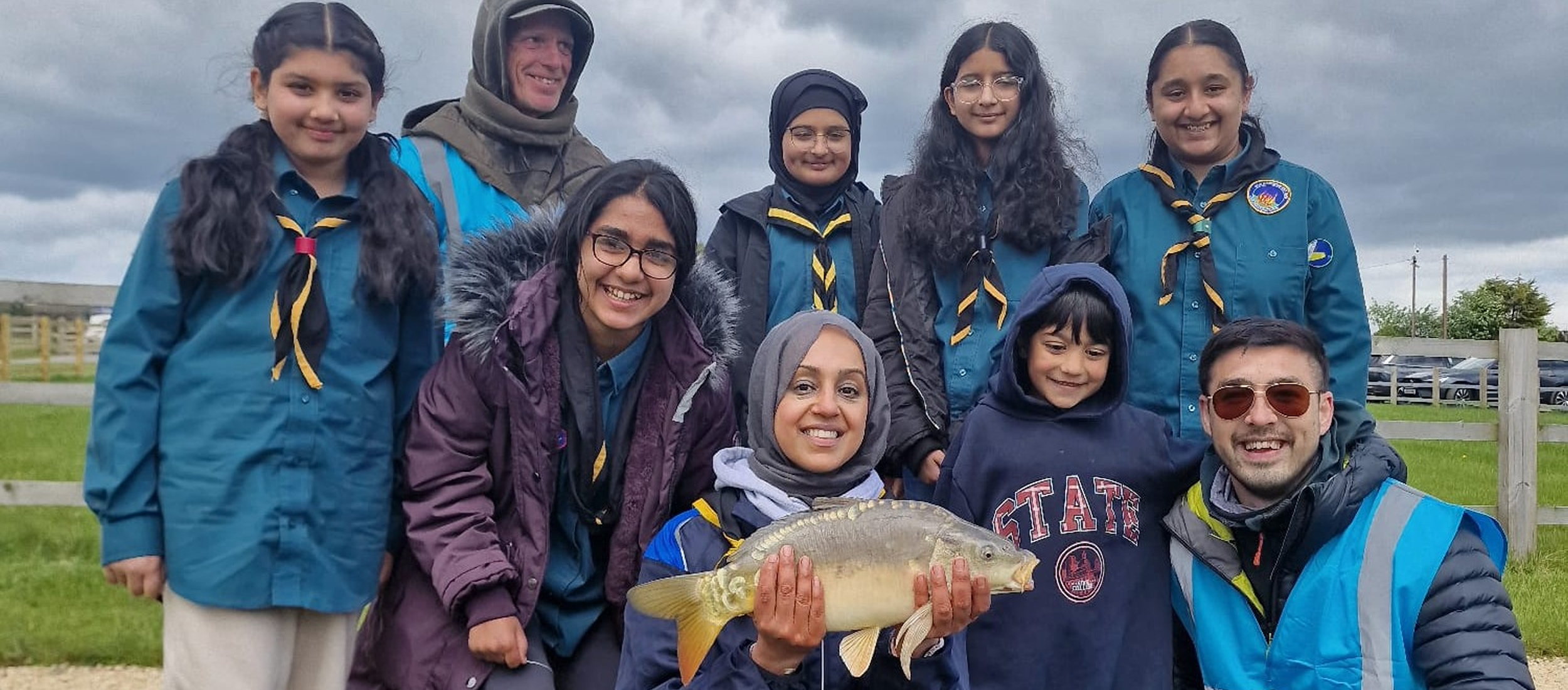
New Horizons had an amazing day taking part in…
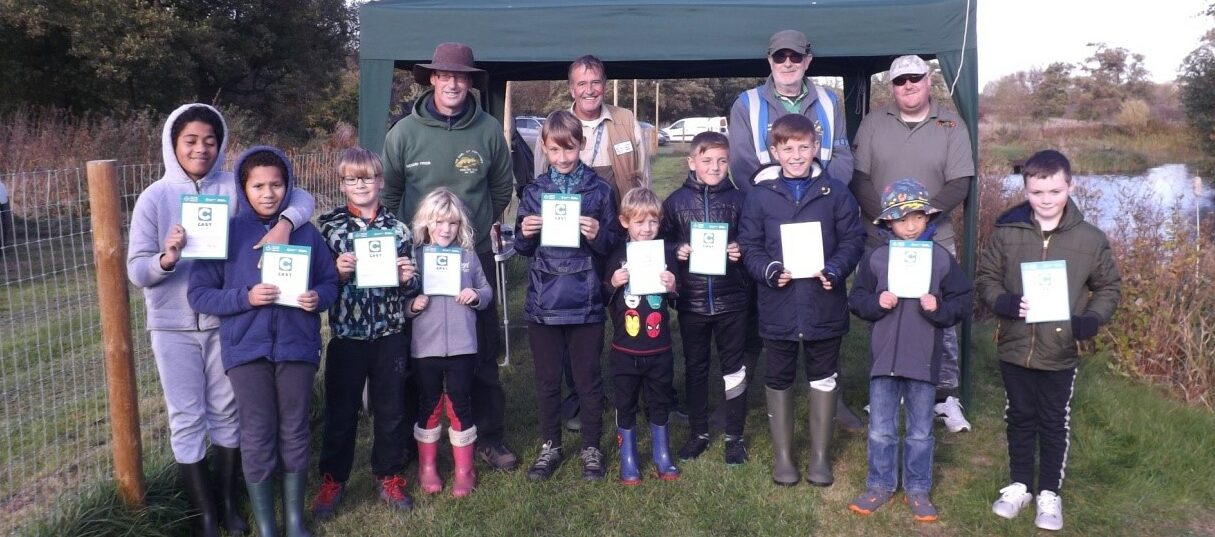
Get Fishing Fund – Funded Project Blog: Steve Clamp…

Somersham Angling Club hosted some fabulous Get Fishing events…
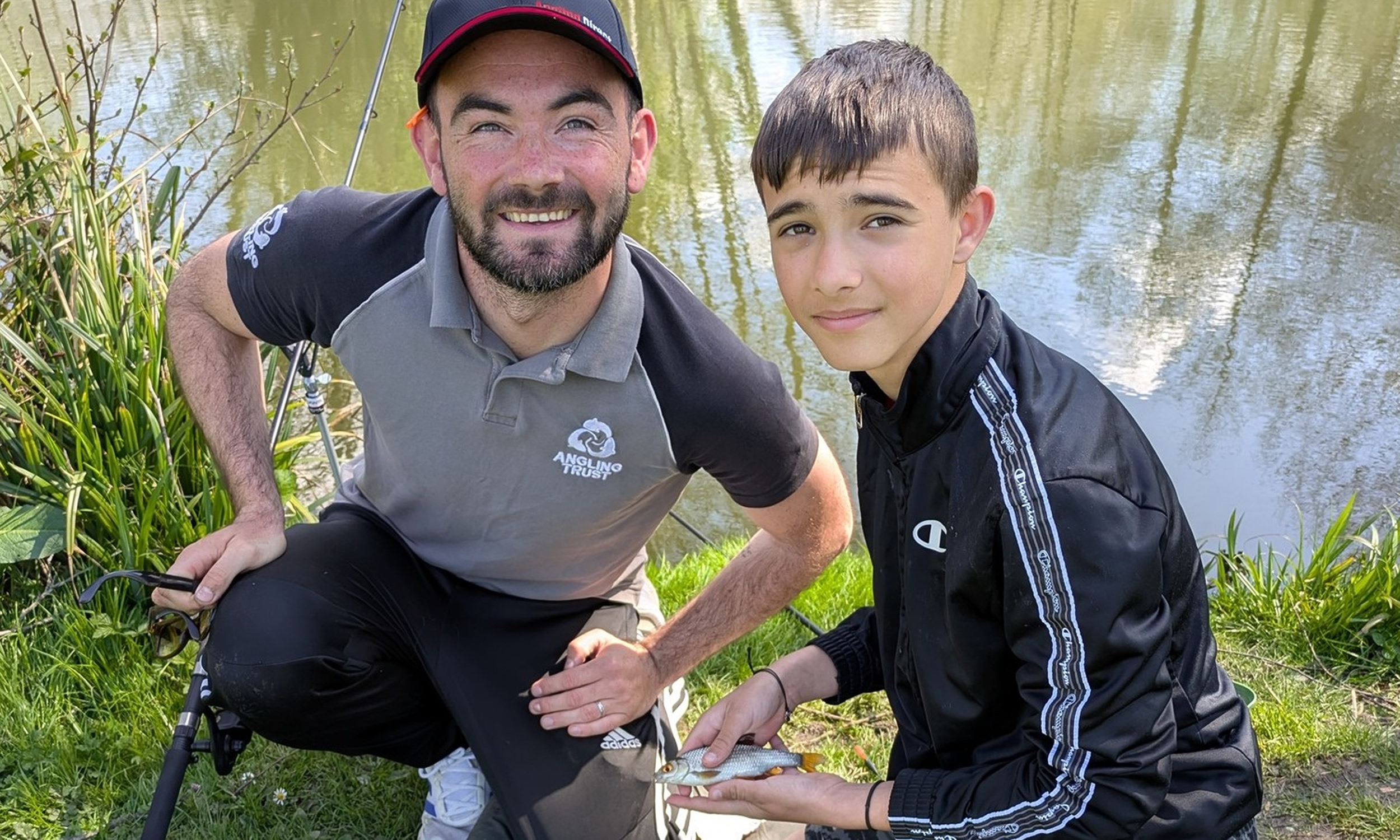
BLOG: Jack’s Back! What’s been happening in my East…

We want a water industry fit for purpose

Government Announces Ban on Bottom Trawling in 41 Marine…

Angling Trust Presses Water Commission to Go Faster and…

VIDEO: Alice and her 3 boys have a day…

Recovery Rods help boost mental health and wellbeing by…

Teddy is hooked! – back for more fishing and…

Thank you to all our volunteers – you do…

Get Fishing Fund – Funded Project: HACRO were visited…

New Horizons had an amazing day taking part in…

Get Fishing Fund – Funded Project Blog: Steve Clamp…

Somersham Angling Club hosted some fabulous Get Fishing events…

BLOG: Jack’s Back! What’s been happening in my East…

We want a water industry fit for purpose

Government Announces Ban on Bottom Trawling in 41 Marine…

Angling Trust Presses Water Commission to Go Faster and…

VIDEO: Alice and her 3 boys have a day…

Recovery Rods help boost mental health and wellbeing by…

Teddy is hooked! – back for more fishing and…

Thank you to all our volunteers – you do…

Get Fishing Fund – Funded Project: HACRO were visited…

New Horizons had an amazing day taking part in…

Get Fishing Fund – Funded Project Blog: Steve Clamp…

Somersham Angling Club hosted some fabulous Get Fishing events…

BLOG: Jack’s Back! What’s been happening in my East…

